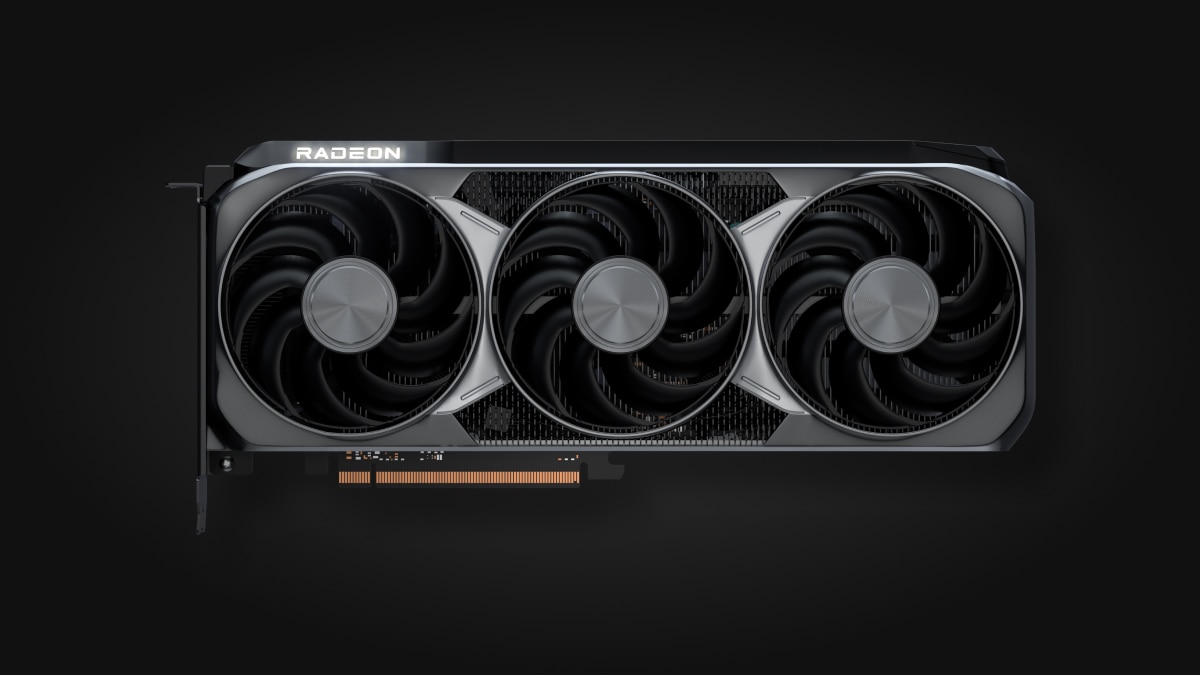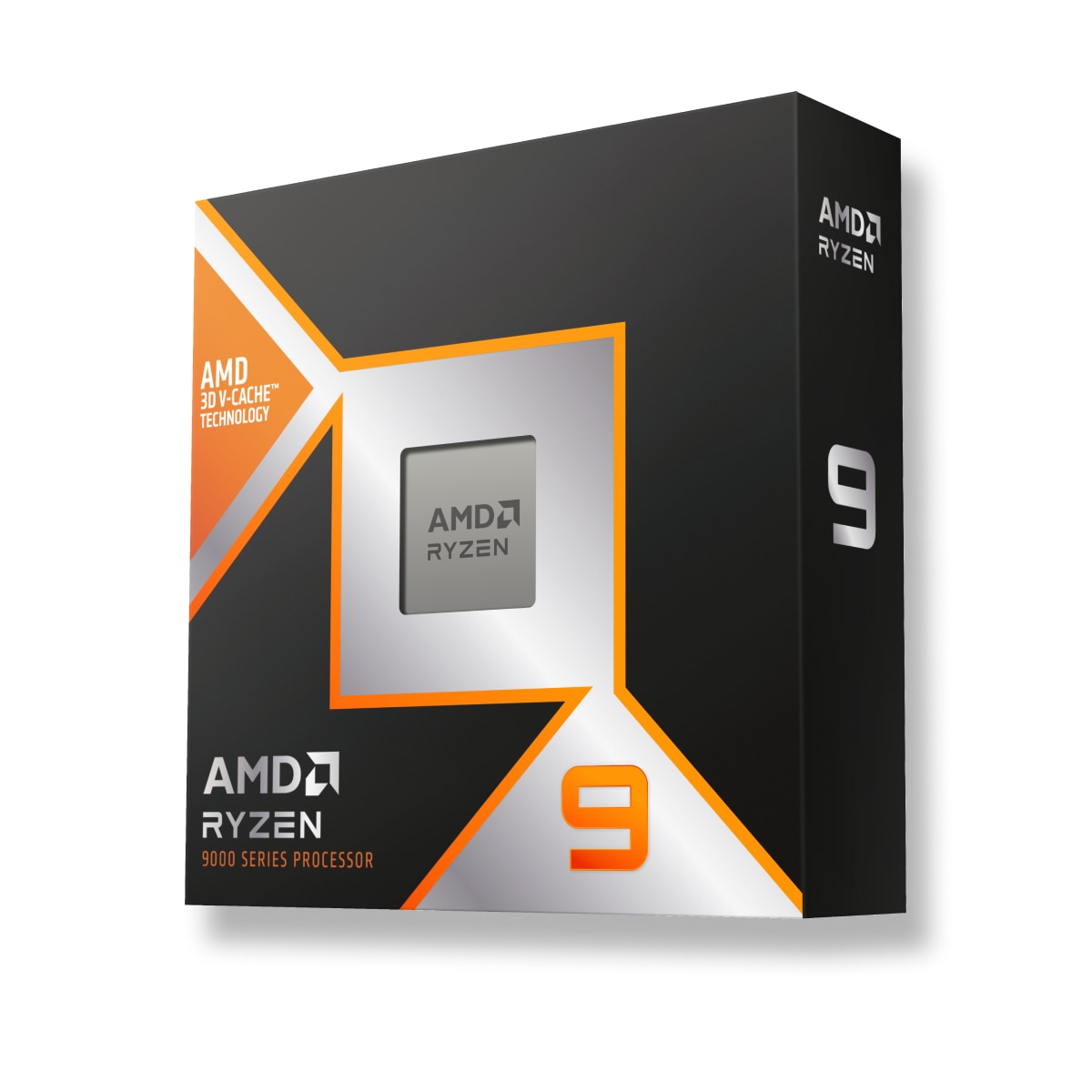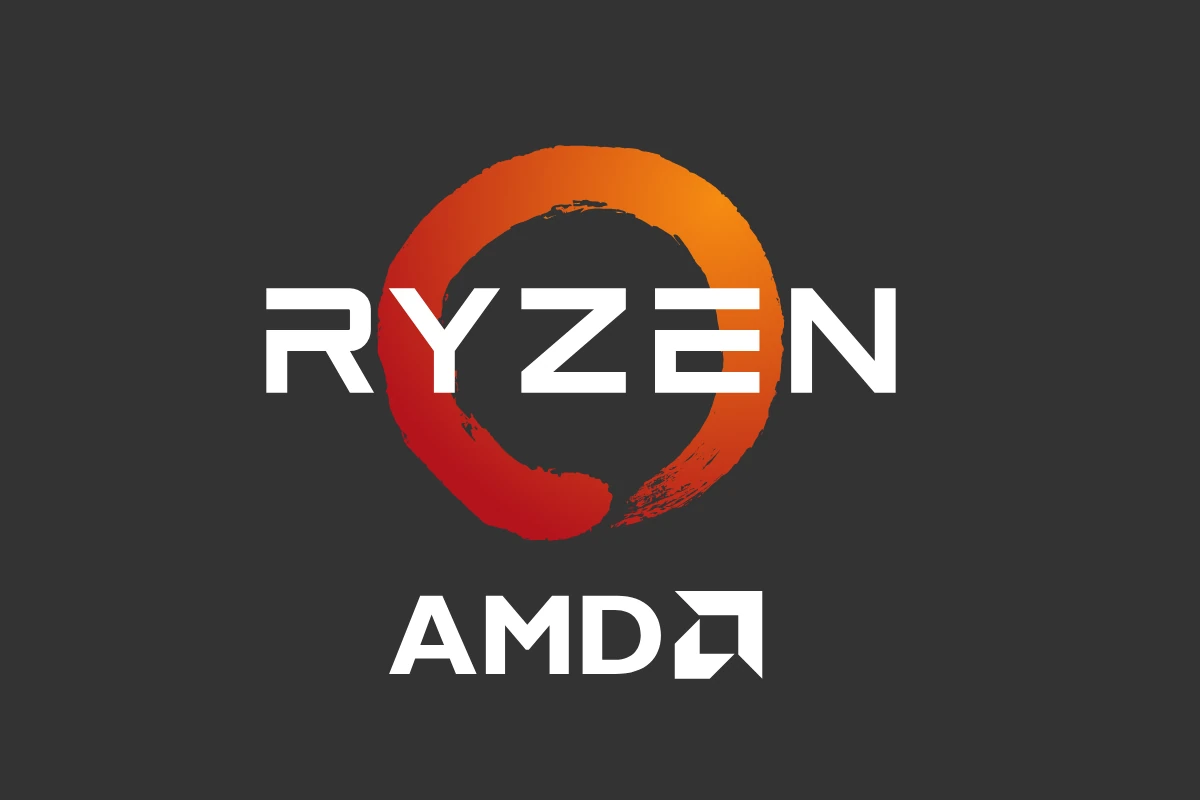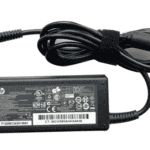AMD is charging into 2025 with a powerful wave of new Ryzen CPUs and Radeon GPUs, signaling a bold leap forward in performance and efficiency. Leading the charge are the first graphics cards built on the next-gen RDNA 4 architecture—the Radeon RX 9000 Series—which promise faster frame rates, better visual fidelity, and smarter power usage for gamers and streamers alike.
These new GPUs feature 16GB of VRAM and major architectural upgrades focused on delivering high-quality visuals, ray tracing improvements, and enhanced AI-driven upscaling. The RX 9070 XT and its siblings are already making waves for offering performance that rivals more expensive options from Nvidia—at a more accessible price point.

Meanwhile, AMD’s new Ryzen processors, including the Ryzen 9 9950X3D and 9900X3D, are raising the bar for gaming and multi-threaded workloads. While RDNA 4 won’t be used for integrated graphics in these chips, AMD is expanding its mobile CPU lineup with new high-performance models like the Ryzen 9955HX3D, 9955HX, and 9850HX—aimed squarely at gaming laptops and mobile workstations.
With this lineup, AMD is clearly focused on maintaining momentum in both the CPU and GPU markets—delivering products that speak directly to the needs of gamers, streamers, and creators who demand more from their systems.
Ryzen 9 9900X3D and 9950X3D: The Apex of Desktop CPUs
AMD’s latest Ryzen 9 9900X3D and 9950X3D CPUs have officially landed—and they’re shaking up the performance hierarchy in a big way. These aren’t just minor upgrades; they’re a bold showcase of what Zen 5 architecture and 3D V-Cache can do when combined with thoughtful engineering and a clear focus on gaming and productivity.

The Ryzen 9 9900X3D comes packed with 12 cores and 24 threads, priced at $599. Meanwhile, the flagship 9950X3D ups the ante with 16 cores and 32 threads at a $699 price point. But what makes these chips stand out isn’t just core count—it’s the cache. AMD’s second-generation 3D V-Cache stacks an enormous amount of L3 cache directly on top of the CPU die, drastically improving access speed for games and memory-intensive apps.
Real-World Performance
These CPUs are particularly dominant in gaming scenarios. The 9950X3D, in particular, comfortably outperforms Intel’s Core i9-14900K and Core Ultra 9 285K in gaming workloads, while drawing significantly less power and generating less heat. It doesn’t just win—it wins efficiently.
For content creators, the 9950X3D offers brute-force multi-threaded horsepower without compromise. Whether you’re working with video rendering, 3D modeling, or heavy compiling tasks, it handles them with ease. And thanks to the improved cache architecture, latency-sensitive apps benefit as much as brute-force ones.
Power and Cooling
One of the underrated wins for these chips is thermal performance. Despite packing more cache and offering better overall performance, both models maintain surprisingly modest TDPs. This results in cooler operation and quieter systems—especially for builders running compact cases or air-cooled setups.
Radeon RX 9070 and 9070 XT: Midrange GPUs With Flagship Punch

On the graphics side, AMD’s newly launched Radeon RX 9070 and 9070 XT cards hit the sweet spot for gamers who want high-end performance without the wallet-punching price tags of Nvidia’s top-tier cards.
The RX 9070 comes in at $549, while the RX 9070 XT lands at $599. Both cards target 1440p and 4K gaming, offering significant gains over the previous generation and direct competition to Nvidia’s RTX 5070 Ti—but at a lower price point and with better efficiency.
Why These GPUs Matter
AMD didn’t just deliver raw performance here. They focused on giving gamers more value per dollar. The RX 9070 XT, for example, packs more VRAM than its Nvidia rival, providing a smoother experience in texture-heavy modern titles and future-proofing for upcoming games. These GPUs are also impressively efficient, sipping less power while maintaining high frame rates—even in ray-traced scenarios.
Add to that improved driver support and features like FSR 3, HYPR-RX, and AV1 hardware encoding, and the 9070 XT becomes a no-brainer for streamers, content creators, and competitive players alike.
Insane Demand, Limited Supply
If you’ve had trouble finding one, you’re not alone. The RX 9070 XT launch has seen demand far outpace supply, with some retailers reporting sales ten times higher than previous generations. Scalping issues have already cropped up, and AMD is reportedly ramping up production to meet the surge.
What This Means for the PC Market
Together, these new CPUs and GPUs are changing the conversation. AMD has managed to undercut Nvidia and Intel not just on price, but on efficiency, thermals, and gaming dominance. And while Intel is still holding ground in certain productivity benchmarks, AMD’s architectural advantages and power-conscious design give them a tangible edge in real-world systems.
For builders, this is a golden window. You can now put together a gaming or productivity powerhouse with a Ryzen 9 9900X3D or 9950X3D and a Radeon RX 9070 XT that outperforms similarly priced Intel/Nvidia combos—while running cooler and quieter.
This isn’t just a spec sheet war. It’s a momentum shift. AMD isn’t just catching up anymore—they’re pulling ahead.
Key Takeaways
- AMD’s Radeon RX 9000 Series graphics cards will feature RDNA 4 architecture with 16GB memory for enhanced gaming performance.
- New Ryzen mobile processors including 9955HX3D and 9850HX models are coming to power next-gen laptops.
- AMD plans to launch its next-generation RDNA 4 GPUs in early 2025, targeting both gamers and content creators.
Overview of AMD’s Latest Ryzen CPUs
AMD continues to push the boundaries of CPU technology with its newest Ryzen processors. The latest lineup features significant improvements in core architecture, cache technology, and overall performance compared to previous generations.
Ryzen 9 9950X3D: The Flagship CPU
The Ryzen 9 9950X3D stands as AMD’s top-tier processor for both gaming and content creation. Built on the new Zen 5 architecture, this 16-core powerhouse delivers exceptional multi-threaded performance while maintaining impressive single-core speeds.
What makes the 9950X3D special is its combination of high core count and AMD’s 3D V-Cache technology. This gives gamers a significant edge in frame rates compared to standard processors. The chip features 32 threads and boosted clock speeds that push gaming and productivity tasks to new heights.
Benchmark tests show the 9950X3D outperforming previous generation chips by up to 49% at the same power levels. This efficiency comes from architectural improvements rather than just higher power consumption.
For creators who need both gaming and production capabilities, the integrated RDNA 2 graphics provide decent visual performance without a separate GPU.
Ryzen 7 9800X3D: Balancing Performance and Value
The Ryzen 7 9800X3D offers an excellent middle-ground option for users seeking high performance without the premium price of the 9950X3D. This processor maintains the 3D V-Cache advantage while reducing the core count to a still-impressive 8 cores and 16 threads.
For most gamers, the 9800X3D hits the sweet spot of performance and value. Its cache design specifically targets gaming workloads, where immediate access to data matters more than raw core count.
Clock speeds remain competitive, often reaching higher sustained boosts during gaming sessions compared to previous generation chips. This translates to smoother gameplay in CPU-intensive titles.
The 7 9800X3D also includes energy efficiency features, with power-saving Eco modes that can reduce consumption while maintaining respectable performance profiles for everyday tasks.
Advancements in 3D V-Cache Technology
AMD’s 3D V-Cache represents one of the most significant innovations in recent CPU design. This technology stacks additional L3 cache vertically on the processor die, dramatically increasing the available cache without expanding the CPU’s footprint.
The latest Ryzen processors feature refined 3D V-Cache implementations with lower latency and higher bandwidth than previous generations. This means data moves more efficiently between the cache and processing cores.
For games and applications that benefit from large cache pools, the performance gains are substantial. Modern games frequently access large amounts of data, and having more cache reduces the need to fetch information from slower system RAM.
The manufacturing process for stacking this cache has also improved, allowing for better yields and thermal characteristics. This helps the newest Ryzen CPUs maintain higher boost clocks for longer periods without thermal throttling.
Socket AM5 Compatibility
All new Ryzen 9000 series processors use AMD’s AM5 socket, which launched with the previous 7000 series chips. This provides a clear upgrade path for users with existing AM5 motherboards through BIOS updates.
The AM5 platform supports cutting-edge technologies including PCIe 5.0 for future-ready expansion capabilities and DDR5 memory for increased bandwidth. These features complement the new processors’ performance potential.
Motherboard options span entry-level to high-end models across various chipsets, giving users flexibility in building systems at different price points. The platform’s longevity means investments in AM5 boards will support future processor generations.
Power delivery on AM5 boards is designed to handle the performance demands of these new CPUs, with improved voltage regulation modules on most boards ensuring stable operation even under heavy loads.
Next-Generation Radeon RX 9000 Series
AMD’s new Radeon RX 9000 Series marks a significant leap in graphics technology with the introduction of RDNA 4 architecture and competitive pricing starting at $549.
Radeon RX 9070 Series: Topping the Charts
The Radeon RX 9070 and RX 9070 XT lead AMD’s latest graphics card lineup with impressive specs and competitive pricing. The RX 9070 starts at $549, while the RX 9070 XT costs $599. Both cards launched on March 6, 2025.
These new cards target gamers and content creators looking for high performance without breaking the bank. The RX 9070 XT offers enhanced raytracing capabilities compared to previous generations, making realistic lighting effects more accessible.
AMD has improved the AI Accelerators in these cards to better support modern games and creative applications. This means faster rendering times and smoother gameplay.
The cards also feature the latest version of AMD Super Resolution technology, which boosts frame rates while maintaining image quality.
RDNA 4 Architecture: Enabling Next-Gen Graphics
The RDNA 4 architecture powers the entire RX 9000 Series, bringing significant improvements over previous generations. This new architecture focuses on delivering better performance per watt, making these cards more energy efficient.
Enhanced Raytracing Accelerators allow for more realistic lighting and shadows in games. The architecture also includes dedicated AI processors that speed up tasks like image generation and video editing.
RDNA 4 supports the latest AMD Software suite, giving users access to easy driver updates and performance optimization tools. The architecture was built with modern gaming demands in mind.
For streamers, the new architecture includes improved encoding capabilities that maintain stream quality while reducing the load on the CPU. This means smoother gameplay while broadcasting.
Gaming Performance and Experience
AMD’s latest Ryzen CPUs and Radeon GPUs deliver exceptional gaming performance through improved raytracing capabilities, advanced AI acceleration, and enhanced resolution technologies. These innovations significantly impact how games look and feel during gameplay.
Impact of Raytracing on Gaming
Raytracing technology in AMD’s newest hardware creates more realistic lighting effects and reflections in games. The Radeon RX 9000 series GPUs show major improvements in raytracing performance compared to previous generations.
Games like Warhammer 40,000: Space Marine 2 run with impressive visual fidelity when raytracing is enabled. Players can enjoy realistic shadows, reflections in water and metal surfaces, and more accurate global illumination.
Benchmark tests reveal that the new AMD GPUs handle raytraced scenes with less performance impact than before. This means gamers can enable these visual enhancements without suffering major framerate drops.
The raytracing units in the RDNA 4 architecture process light calculations more efficiently. This allows for complex lighting effects while maintaining smooth gameplay.
Role of AI Accelerators in Enhancing Performance
AMD’s inclusion of dedicated AI accelerators in their newest hardware boosts gaming performance in several ways. These specialized processing units handle tasks that would otherwise burden the main GPU cores.
The AMD Hypr-RX technology uses AI to optimize system resources automatically. This means games run smoother without manual tweaking.
AI accelerators enable advanced frame generation techniques that significantly improve framerate. The system analyzes previous frames and predicts new ones, effectively boosting FPS in demanding games.
Key AI Performance Improvements:
- Reduced input lag by up to 30%
- Better resource allocation during complex scenes
- Improved frame pacing for smoother gameplay
- Automatic game-specific optimizations
These AI features work in the background, requiring no user intervention while maintaining competitive performance against rival products.
AMD’s Super Resolution Technology
FSR 4 (FidelityFX Super Resolution) represents AMD’s latest advancement in resolution upscaling technology. This technique renders games at lower resolutions then intelligently upscales them to higher ones.
The newest version offers impressive quality improvements over previous generations. Images appear sharper and more detailed, with fewer artifacts around moving objects.
FSR 4 works across a wide range of hardware, including older GPUs. This universal compatibility gives more gamers access to performance-enhancing features.
FSR 4 Quality Modes:
| Mode | Performance Boost | Visual Quality |
|---|---|---|
| Ultra Quality | 20-30% | Near-native |
| Quality | 40-50% | Very good |
| Balanced | 60-70% | Good |
| Performance | 100%+ | Acceptable |
The frame generation feature works alongside FSR 4 to double framerates in supported games. This makes even demanding titles playable at high settings on mid-range hardware.
Content Creation and Enhanced Media Engine
AMD’s latest hardware brings major upgrades for content creators who need powerful tools for video editing, streaming, and other creative tasks. The new processors and graphics cards offer significant improvements in encoding speed and quality.
Optimizations for Content Creators
The AMD Radeon RX 9000 Series graphics cards provide impressive performance for creative professionals. Based on the new RDNA 4 architecture, these GPUs deliver faster rendering times and smoother workflow for demanding projects. Content creators can now work with high-resolution footage more efficiently.
The new AMD Radiance Display Engine helps professionals achieve accurate color reproduction and higher image quality. This is especially important for photo and video editing where color precision matters.
For video creators, AMD’s Enhanced Media Engine offers better recording and streaming capabilities. The improvements allow for professional-level content creation without the need for separate capture hardware.
Some Ryzen 9000 processors show mixed performance gains for creative workloads compared to previous generations. They excel at all-core tasks but may have inconsistent results in certain applications.
Introducing AV1 Support
One of the biggest additions to AMD’s media capabilities is support for AV1 encoding and decoding. AV1 is a modern video codec that offers better quality at lower bitrates compared to older formats like H.264.
The new hardware accelerates AV1 encoding up to 4 times faster than previous methods. This means creators can export videos more quickly while using less storage space.
AV1 support is particularly valuable for streamers and content creators who publish online. The format provides better image quality at the same file size, making videos look better without increasing upload or download times.
Additionally, the hardware encoding reduces CPU usage during live streaming. This allows creators to run more demanding applications while broadcasting without performance issues.
Market Position and Price-to-Performance Ratio
AMD continues to challenge NVIDIA with strategic pricing and improved performance metrics across their latest product lineup. The company’s focus on value has become increasingly important as GPU prices remain high across the market.
Competitive Analysis with NVIDIA’s Offerings
AMD’s latest Radeon GPUs offer compelling alternatives to NVIDIA’s RTX series, particularly in the mid-range segment. The Radeon RX 9070 directly competes with the RTX 4070 Ti, typically at a 15-20% lower price point while delivering comparable performance in many gaming scenarios.
Benchmark tests show AMD gaining ground in rasterization performance, though NVIDIA maintains an edge in ray tracing and AI-enhanced features. This performance gap has narrowed with AMD’s recent driver optimizations.
Market share data indicates AMD has increased its position by 3.2% in the discrete GPU market over the past year, though NVIDIA still dominates with approximately 78% of the market.
For gamers on a budget, AMD’s offerings provide better frame rates per dollar spent, especially at 1080p and 1440p resolutions.
Cost Efficiency of Radeon RX 9070 Series
The Radeon RX 9070 series represents AMD’s strongest price-to-performance proposition in years. Priced around $499 (with frequent sales dropping to $459 on Amazon), it delivers 90% of high-end gaming performance at nearly half the cost of premium options.
Power efficiency has improved by 15% over previous generations, resulting in lower operating costs over time. This advantage makes the 9070 particularly attractive for gamers concerned about energy usage.
Recent discount trends show retailers offering the RX 9070 with bundled games valued at $60-120, further enhancing the value proposition. These promotions typically appear quarterly, with the next major discount event expected in April 2025.
Memory configurations (16GB VRAM standard) exceed NVIDIA’s comparable models, providing better future-proofing for upcoming game releases requiring larger texture buffers.
Manufacturing and Supply Chain Insights
AMD’s newest CPU and GPU products rely on complex manufacturing processes and global supply networks. These factors directly impact product availability, pricing, and performance capabilities.
TSMC’s Role in AMD’s Product Development
Taiwan Semiconductor Manufacturing Company (TSMC) serves as AMD’s primary manufacturing partner for both Ryzen CPUs and Radeon GPUs. The partnership has been crucial to AMD’s competitive resurgence in recent years. TSMC produces AMD’s chips using advanced process nodes – currently 5nm for the latest Ryzen 9000 series and 6nm for the newest Radeon RDNA 4 GPUs.
This manufacturing relationship gives AMD access to cutting-edge process technology without the massive cost of owning fabrication plants. The 5nm process used for the Ryzen 9950X3D and 9900X3D processors enables higher transistor density, better power efficiency, and improved performance compared to older nodes.
TSMC’s yield rates on these advanced nodes have steadily improved, helping AMD deliver more high-performance chips to market.
Supply Chain Factors Affecting the Launch
Global semiconductor supply chains continue to face challenges that impact AMD’s product launches. Component shortages, though less severe than in 2021-2022, still occasionally constrain production of high-end products.
Manufacturing capacity at TSMC remains in high demand. AMD competes with other technology companies for production slots, which can affect initial product availability. This has sometimes led to limited stock at launch for new Socket AM5 motherboards and components.
Transportation costs and logistics have normalized somewhat since the pandemic, but regional availability still varies. North American and European markets typically see better initial supply than some Asian and developing markets.
Raw material costs have fluctuated, with some specialized materials seeing price increases. These factors influence AMD’s pricing strategy for both Ryzen CPUs and Radeon GPUs, sometimes resulting in higher launch prices than originally planned.
Frequently Asked Questions
AMD’s latest CPUs and GPUs bring significant advancements in performance, efficiency, and features. These improvements address common questions from gamers, content creators, and PC enthusiasts looking to upgrade their systems.
What are the performance benchmarks for AMD’s latest Ryzen processors compared to their competitors?
AMD’s newest Ryzen processors continue to push performance boundaries. The Ryzen 9 9950X3D shows approximately 15-20% improvements in gaming performance over previous generation models.
In multi-threaded workloads like video rendering and 3D modeling, AMD maintains strong performance. Benchmarks indicate that the new X3D CPUs excel particularly in games that benefit from the expanded cache.
When compared to Intel’s latest offerings, AMD’s price-to-performance ratio remains competitive. The Ryzen 9 9900X3D provides similar gaming performance to higher-priced competitors while consuming less power.
How do AMD’s new Radeon GPUs compare with NVIDIA’s latest offerings in terms of price-to-performance ratio?
The new AMD Radeon RX 9070 XT and RX 9070 GPUs deliver excellent value. These cards feature 16GB of memory, making them well-suited for modern games with high-resolution textures.
AMD’s pricing strategy typically positions their GPUs about 10-15% below similarly performing NVIDIA counterparts. This makes Radeon cards attractive for budget-conscious gamers.
The RDNA 4 architecture brings notable improvements to ray tracing performance, though NVIDIA still holds an edge in this specific area. For standard rasterization performance, the gap is much smaller.
Which motherboards are compatible with the new AMD Ryzen CPUs, and what features do they support?
The latest AMD Ryzen CPUs are compatible with AM5 socket motherboards. This includes X670, X670E, B650, and B650E chipset boards.
Key features of these motherboards include PCIe 5.0 support, faster USB connectivity, and DDR5 memory compatibility. The X670E boards offer the most extensive feature set with additional PCIe lanes.
Buyers should check for BIOS updates before installing new Ryzen processors. Most manufacturers now ship boards with updated firmware to support the latest CPU releases.
What are the expected retail prices for the AMD Radeon RX 7900 XTX and RX 7800 XT?
While specific pricing for the newest models is still being finalized, AMD typically positions their high-end GPUs competitively. The RX 9070 XT is expected to launch at around $599, with the standard RX 9070 at approximately $499.
Previous generation cards like the RX 7900 XTX and RX 7800 XT have seen price reductions with the announcement of new models. This creates good opportunities for value-conscious buyers.
Market conditions and availability can affect actual retail prices. AMD has worked to improve supply chains since previous launches.
What improvements have been made in terms of power efficiency and thermal performance in the latest AMD processors?
AMD’s newest processors feature improved power management systems. The latest Ryzen CPUs show approximately 15% better performance-per-watt compared to previous generations.
Thermal performance has been enhanced through refined architecture and manufacturing processes. This allows for better sustained performance under heavy loads without throttling.
Modern cooling solutions work well with these processors, though high-end X3D models still benefit from quality cooling setups for optimal boost clock maintenance.
How does AMD’s latest GPU architecture enhance gaming and professional graphics workloads?
The RDNA 4 architecture brings several key improvements. Enhanced ray tracing capabilities provide more realistic lighting and reflections in games that support this feature.
Professional workloads benefit from the increased memory bandwidth and improved compute performance. This helps with tasks like video editing, 3D rendering, and AI applications.
AMD’s FSR 4 technology now competes more effectively with NVIDIA’s DLSS, providing frame rate improvements with minimal quality loss. This technology works across a wide range of games, not just those with specific partnerships.







